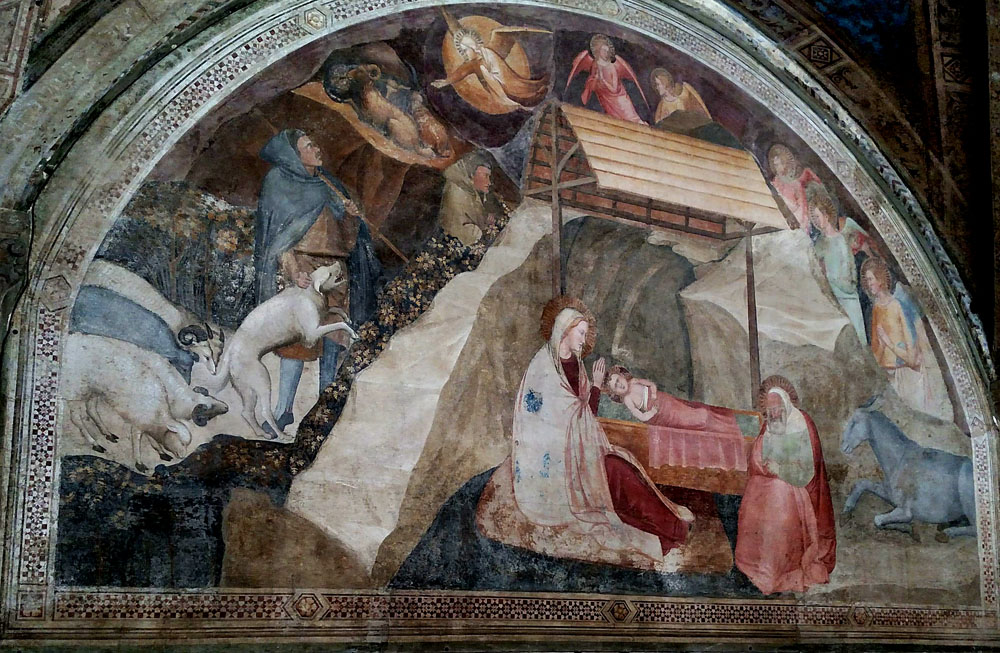Andrea Orcagna, The Birth of Jesus

1340-47
Fresco
Annunciation Chapel, Santa Maria Novella, Florence
As in
Bartolo di Fredi's Nativity of 1374, Orcagna compromises between the competing traditions of placing the birth in a cave or in a stable – by putting the stable at the mouth of a cave.
The portrait of the Virgin Mary is influenced by "Madonna of Humility" images, which were developed in the 14th century and continued popular in the 15th and beyond. In these, Mary holds the Christ Child while seated on a floor or the ground, her tunic and mantle spreading lengthwise before her
(example). In the present image, she does not hold the Christ Child but worships him with praying hands, a trope that will become common after Bridget of Sweden's vision of about 1373 but that is quite unusual before then.
The shepherd in brown has arrived at the Nativity scene and gazes on it from behind a wall of stone. Walls separating the scene from the shepherds are a feature in some late-medieval Nativities.
On the left, the shepherd's dog responds to the angel in the manner of all dogs confronting a stranger on their turf. Similar dogs bark or bay at the angel in the Jean Poyet's Hours of Mary of England (Wieck, 26) and
a Nativity in Rome's Musei Capitolini. However, dogs are not in evidence in any of the images I have seen of the shepherds' adoration at the manger.
Another unusual feature is the absence of the traditional ox. The portrait of St. Joseph sitting with hand on chin, on the other hand, is conventional.
View this image in full resolution.
Read more about the iconography the birth of Christ in general or the shepherds in particular.
Photographed at the chapel by Richard Stracke, shared under Attribution-NonCommercial-ShareAlike license.